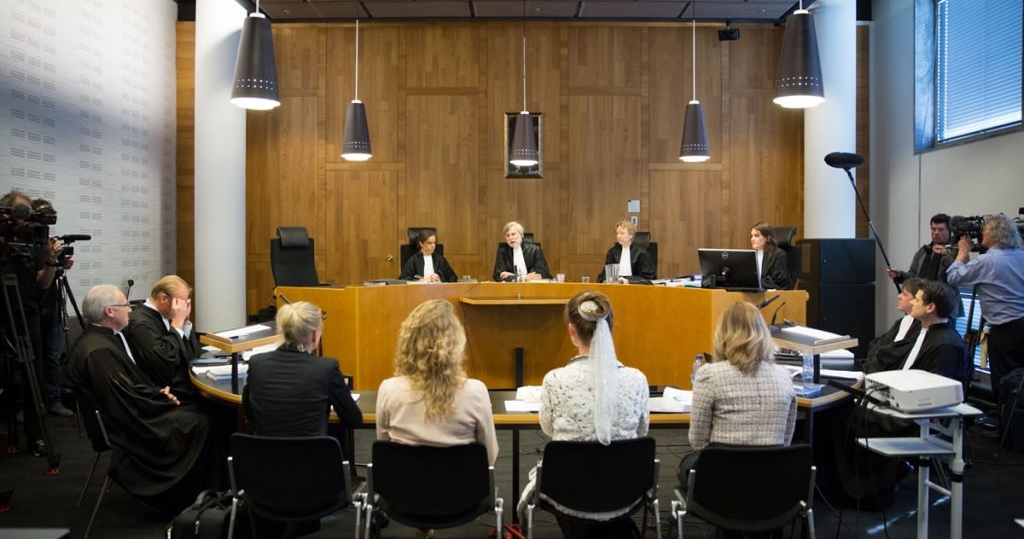On Sunday, October 31 the 26th conference on climate change of the United Nations (COP26) started in Glasgow. In what many are calling the most important climate summit since the Paris agreement, Parties face the daunting task of putting into operation the objectives agreed upon in 2015 at the COP21 in Paris.
COP26 will be the world’s moment of truth. pic.twitter.com/3RGHD7liLz
— Boris Johnson (@BorisJohnson) October 31, 2021
The overarching objective is to ensure that global warming stays within the 1.5°C increase above pre-industrial levels and therefore prevent the worst consequences of climate change. In fact, the UK has made “keep 1.5 alive” the rallying cry for Cop26, which involves agreeing upon more ambitious emissions reductions and how to achieve them by virtually all Parties involved.
In the build-up to the COP26, on October 30-31 world leaders from the G20 club of countries joined in talks in Rome, in a meeting that many hoped would set the pace for proceedings in Glasgow.
“Keeping 1.5 degrees within reach will require meaningful and effective actions and commitment by all countries, taking into account different approaches,” the G20 said in their final communique.
The final Declaration of the #G20RomeSummit
👉 https://t.co/IZbXcodE9z pic.twitter.com/piAhB1CtEZ— G20 Italy (@g20org) October 31, 2021
However, during their meeting in Rome, the G20 club of high-income countries – that are also responsible for around 80% of current greenhouse-gas emissions worldwide – achieved little in the way of upping the ante on climate action and simply re-stated the goals laid out in the Paris agreement in 2015 to “limit warming” to 2°C above pre-industrial efforts and “pursue efforts” to keep it to 1.5°C.
Furthermore, their pledge to reach a target of net-zero carbon emissions “by or around mid-century”, instead of setting a clear 2050 date, has also left campaigners and summit host Italy disappointed.
Researchers have shown with overwhelming evidence that even if countries meet their 2030 emission targets in full, global heating would only be limited to 2.6 to 2.7°C this century, according to the UN Emissions Gap report.
The latest @UNEP Emissions Gap Report finds new national climate action plans only take 7.5% off predicted 2030 emissions, while 55% is needed to meet the 1.5°C Paris goal.
Net-zero pledges could make a big difference, but are often too vague.
🔗https://t.co/Miu04WOJDB | #COP26 pic.twitter.com/E0Sbk8NcO3
— UN Climate Change (@UNFCCC) October 26, 2021
Work such as the G20 Climate Risks Atlas also outlines with clarity how each of the G20 countries will be affected by a changing climate putting further emphasis on the need to update commitments.
To truly “keep 1.5 alive” overall efforts must be seven times higher than at present which has led the UK COP26 presidency to consider a proposal for the final Glasgow outcome to demand another round of updated NDCs by 2023. So, can leaders deliver and w2hat should we expect from the COP26?
Leaders weigh in on the COP26
The UK presidency has summed up the COP26 objectives in four points: Secure global net-zero by mid-century and keep 1.5°C within reach; adapt to protect communities and natural habitats; mobilise finance; work together to deliver.
Notwithstanding difficulties related to the COVID-19 pandemic, representatives from more than 190 countries – including world leaders and tens of thousands of negotiators – are expected to attend the COP26, as well as members of the press and observer organisations.
In the build-up to the meeting the UK Prime Minister, Mr Johnson, called for leaders to take advantage of this opportunity: “The question everyone is asking is whether we seize this moment or let it slip away.”
COP26 President Alok Sharma explained that agreement would be “tougher than what we achieved in Paris” five years ago, when almost all the world’s nations agreed a treaty to “pursue efforts” to limit the global temperature rise to 1.5°C.
The task ahead of you is significant but look at what you have accomplished […] success is entirely possible and I encourage you to keep the big picture in mind, look beyond your specific agenda item to what we are trying to achieve together […] let us rise to the enormous challenge of our time.
Patricia Espinosa, executive secretary of the UNFCCC
Kerry, special envoy for climate to Joe Biden, has kept a positive outlook in the build-up saying that he anticipated “surprising announcements” from key countries.
“The measure of success at Glasgow is we will have the largest, most significant increase in ambition [on cutting emissions] by more countries than everyone ever imagined possible. A much larger group of people are stepping up,” he said in an interview with the Guardian. “I know certain countries are working hard right now on what they can achieve.”
Much of the optimism revolves around the Cop26 setting the scene for future progress. “There is not a wall that comes down after Glasgow,” said Kerry. “It is the starting line for the rest of the decade.”
In contrast, some leaders are already pointing to sticking points that will hinder efforts to raise ambition, not least of which the need to mobilise more financial support for low-income countries. “This talk of another round of [climate plans] will just feed into the hot air which is already plenty in the COP process,” says Pakistan’s climate minister Malik Amin Aslam when talking to Climate Home News.
“The huge gap between what is already in the NDCs and what is actually being implemented needs to be plugged instead of another round of updating NDCs. Let’s talk climate action and not bureaucratic and endless updating of meaningless NDCs.”
What researchers want from COP26
Climate change researchers have also emphasised the importance of the COP26 and how it can be a turning point for climate action. The first point that emerges is that current pledges made by Parties are not sufficient to keep 1.5 alive.
Furthermore, research has shown quite clearly the difference between a 2 and 1.5°C increase scenario and the impacts that this will have on people and the planet. “Countries must upgrade their NDCs substantially to align with the need of halving carbon emissions by 2030. Anything less ambitious will not put us on a 1.5°C course,” explain RECEIPT researchers in their article on what researchers want from the conference.
For this reason, researchers are pointing to the need for the COP26 to rally countries for more ambitious NDCs and reach their emission reduction targets for 2030, as well as outlining adaptation measures. This will require, among other things, establishing rules for international carbon markets for parties to trade emission reductions and agreeing on a common time frame for NDCs.
To keep 1.5 alive there is also a need for international collaboration and this also revolves around scaling up international finance and that high-income countries respect their COP15 pledge to mobilise 100 billion USD per year from 2020 onwards for climate action in low-and middle-income countries.
Although the 100 billion USD has so far not been met climate economist Nicholas Stern predicts that the $100bn target would be met next year.
Another key issue brought forward by researchers is that of adaptation. In 2013, the Warsaw International Mechanism (WIM) was established to avert, minimise and address losses and damages associated with the impacts of climate change. Although substantial progress has been made with regard to loss and damage, clear and strict guidelines need to be agreed upon at COP26 to facilitate implementation.
For researchers, it is therefore about both mitigation and adaptation. As the planet faces ever harsher and more frequent climate extremes, mitigation and adaptation must be seen as two different approaches to the same.
“It is one thing to ensure that infrastructure reaches net-zero before 2050, but it should not be forgotten that this infrastructure will need to be resilient to increasing climate extremes”, Which is a clear example of how global leaders must “shy away from ‘quick fixes’ and develop resolute policies and investments to accelerate both mitigation and adaptation efforts”, state RECEIPT researchers.
Will countries keep 1.5 alive
Staying within the 1.5°C threshold would require carbon emissions to fall by 45% this decade, but apart from a brief plunge owing to Covid-19 lockdowns, emissions are still rising and are expected to show their second-strongest leap on record this year. Despite new NDCs from the US, the UK, the EU and others, in total the commitments so far would lead to a 16% rise in emissions.
Kerry has commented that “Glasgow has to show strong commitment to keeping 1.5°C in reach, but that does not mean every country will get there. We acknowledge that there will be a gap [between the emissions cuts countries offer and those needed for a 1.5°C limit]. The question is, will we have created a critical mass? We are close to that. If we have some more countries stepping up in the next weeks, we have something to build on.”
The key sticking points
Once again the key issue that has mired climate negotiations since 2015 is Article 6 of the Paris Agreement, namely the rules that regulate the carbon markets. A key issue that governments have failed to agree upon and has been delayed continuously.
The market would allow nations to support and finance carbon-cutting endeavours in other countries and in exchange receive carbon credits for emissions in their own countries. However, this leaves the door open for discrepancies in how carbon is counted and without rigorous rules could undermine the key objective: keep 1.5 alive.
The three most contentious issues revolve around whether to accept some double counting of emissions reductions, the transition of old Kyoto-era credits into the Paris regime and whether a share of revenue from bilateral carbon trading agreements should go to the Adaptation Fund.
However, according to Gilles Dufrasne, policy officer at Carbon Market Watch, placing too much attention on the outcome of negotiations around Article 6 may push countries to seek a deal at any cost.
“This Cop should not be about Article 6, it should be about finance, ambition and keeping 1.5 alive and not on what extent to compromise on environmental integrity just to have a carbon market,” he said.






